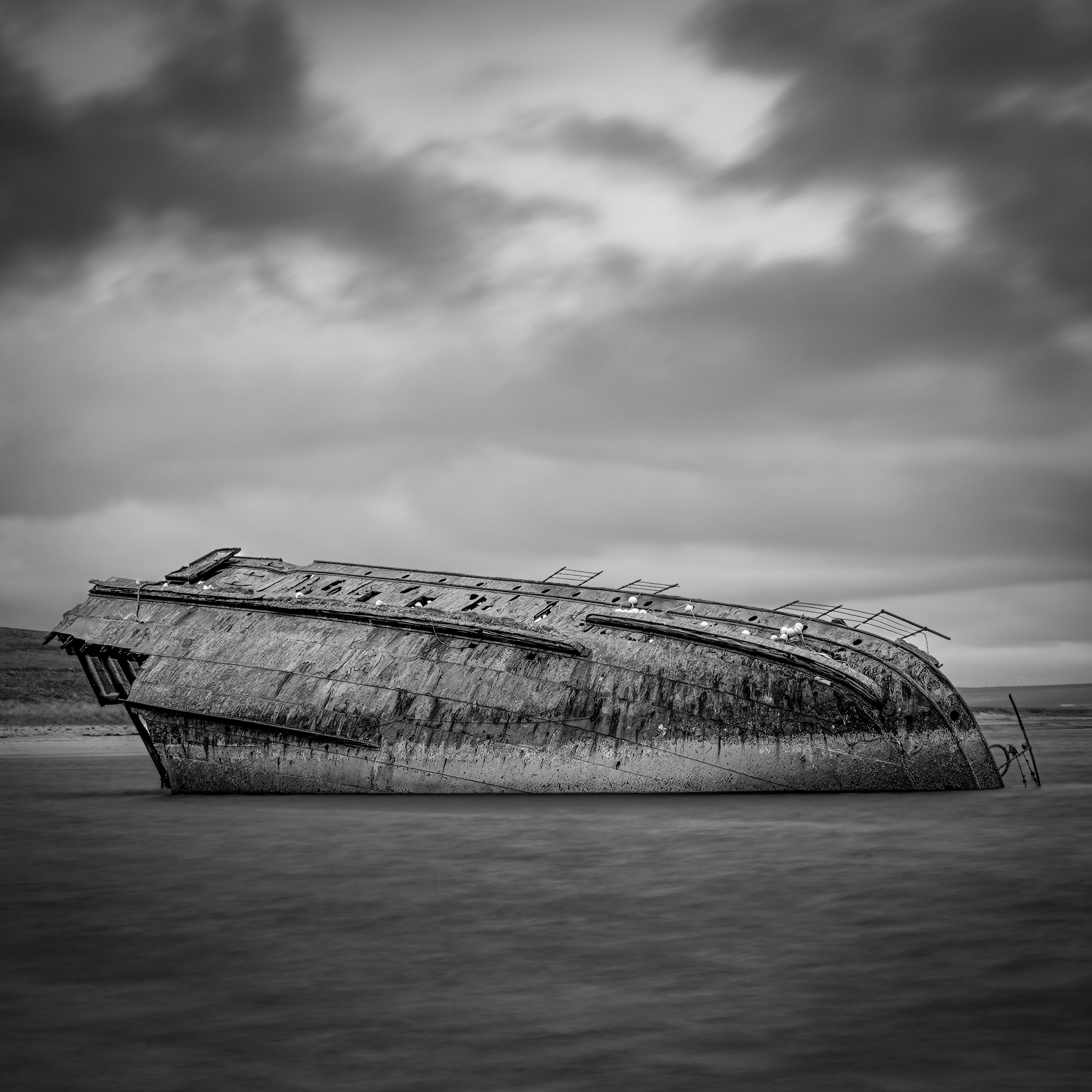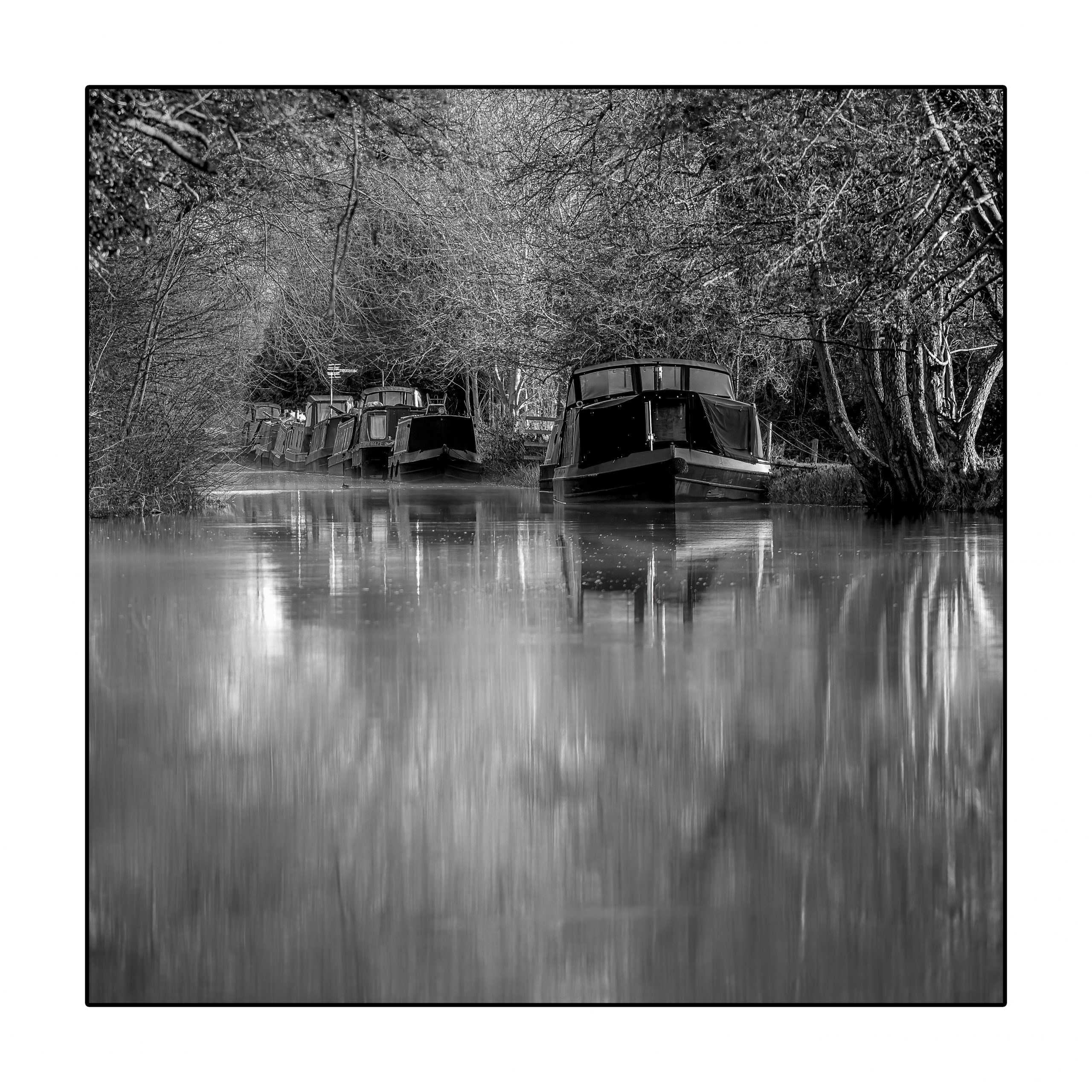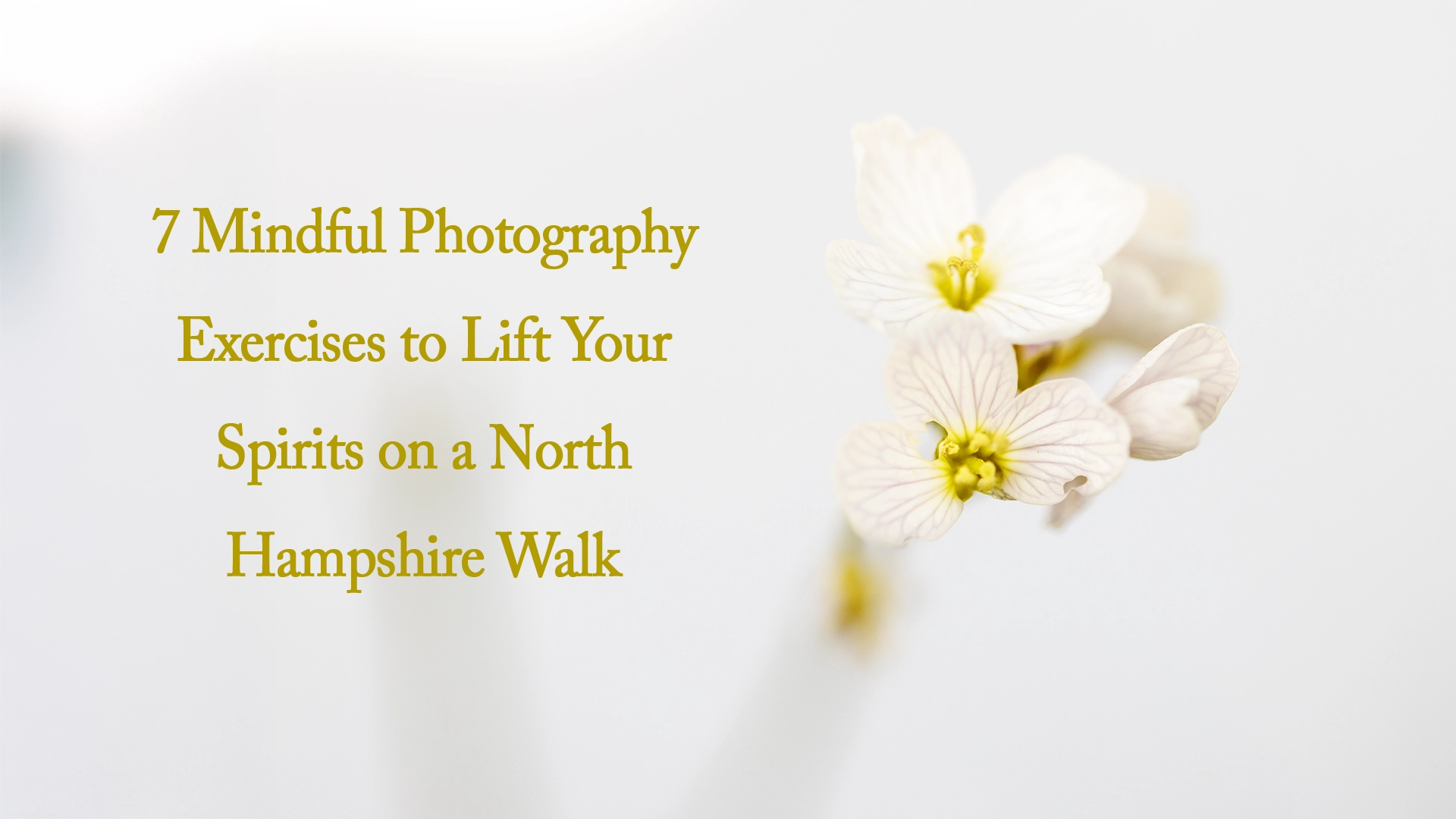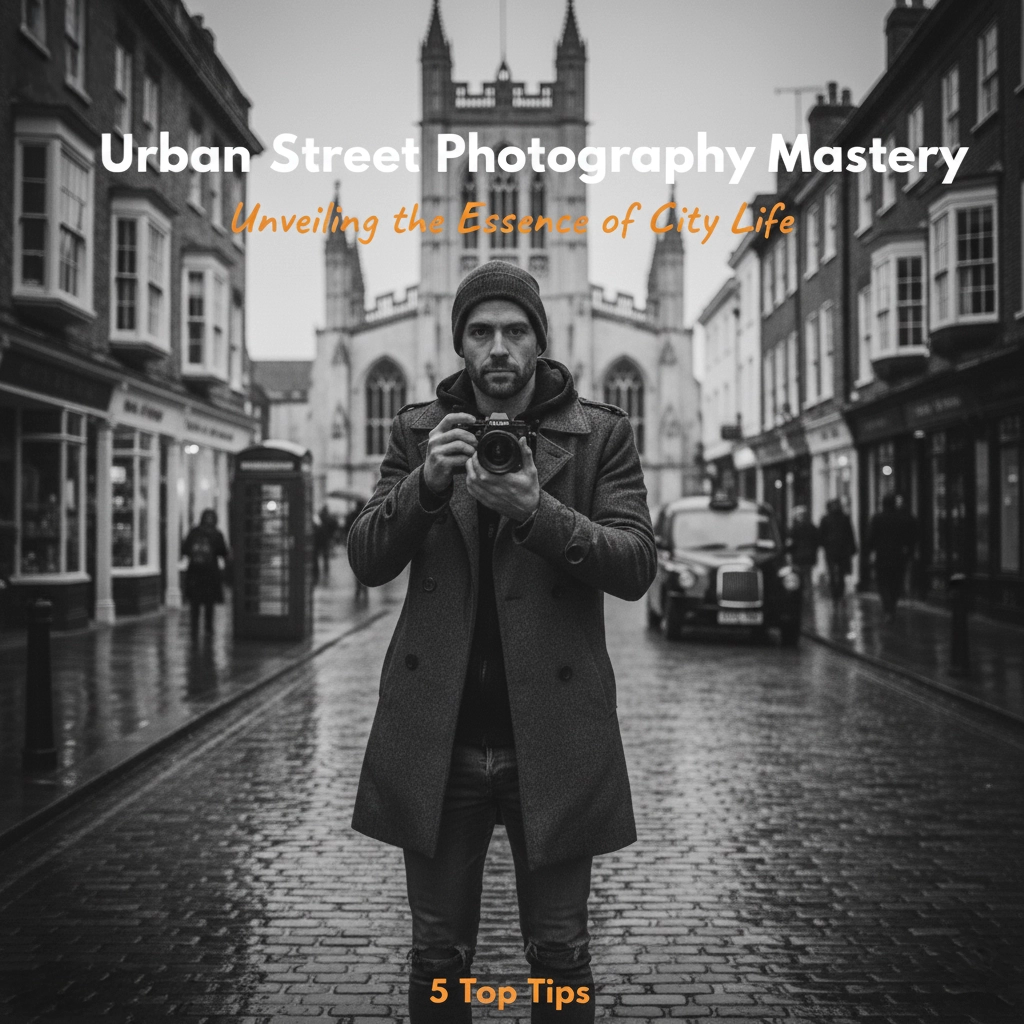Unleash Your Creative Side with Black and White Photography
Black and white photography has been around for more than a century, but it remains a popular art form that offers a timeless and classic look. Despite the rise of colour photography, black & white photography continues to be a popular medium for photographers. In this guide, we will explore everything you need to know about black & white photography, from what it is to how it works, and how to get started.
Table of Contents
ToggleWhat is Black & White Photography?
Black & white photography is a medium that captures images without colour. It can be done through either film or digital photography. By removing colour from the equation, the focus is shifted to other elements such as contrast, texture, and form. Black & white photography can create a timeless and classic look that can evoke emotions that colour photography cannot.

The absence of colour can create a stark contrast, making certain features stand out more. The black & white format helps to highlight the shapes and patterns of the subject matter. In contrast to colour photography, black & white photography draws attention to the details in the photograph, emphasising light and shadow.
What is a Black & White Image Called?
So “what is black and white photography called? – A black and white image is typically called a monochrome photograph or Monochrome Photography, which translates to “one colour.” The term “monochrome” is used to describe any image that uses only shades of one colour. The colour is typically black, white, or gray, but can also include other colours such as sepia; often referred to as vintage photography.
What Makes a Great Black & White Photograph?
A great black and white photograph requires a good understanding of light, contrast, and composition (black and white photography definition). The photographer must be able to visualise the final image and create it in their mind’s eye. A great black and white photograph will often have the following characteristics:
- Strong Contrast: Black & white photography relies heavily on contrast to create an image with impact. High contrast can create a dramatic effect, while low contrast can create a softer image.
- Textures: Black & white photography highlights textures, as the lack of colour draws attention to the details of the subject matter. A great black and white photograph will showcase the textures of the image, creating depth and interest.
- Composition: As with any photograph, composition is important in black & white photography. A well-composed photograph will create a strong visual impact and draw the viewer’s attention to the subject matter.
- Emotion: Black & white photography can evoke strong emotions, making it a powerful medium for storytelling. A great black and white photograph will elicit an emotional response from the viewer.
What is the Chemistry in Black & White Photography?

The chemistry in black & white photography is the process by which an image is created on photographic paper or film. In traditional black & white photography, the process involves exposing light-sensitive paper or film to light, which causes a chemical reaction that results in an image. The process involves several steps, including developing, fixing, and washing the image to produce a finished print.
The process of developing a black & white photograph involves several chemicals, including developer, stop bath, and fixer. The developer is used to expose the image and create a latent image, while the stop bath halts the development process. The fixer is used to stabilise the image, making it permanent.
How Does Black & White Photography Affect the Mood?
Black & white photography can affect the mood of an image in several ways. The absence of colour can create a stark contrast, making certain features stand out more. The black and white format helps to highlight the shapes and patterns of the subject matter. In contrast to colour photography, black & white photography draws attention to the details in the photograph, emphasising light and shadow.
Black & white photography can also create a timeless and classic vintage photography look that evokes emotions that colour photography cannot. It can create a moody and dramatic effect, making it a popular medium for portraying subjects such as landscapes, cityscapes, and portraits. Additionally, black & white photography can convey a sense of nostalgia, as it is often associated with the past.
What Do Black & White Photos Evoke?
Black & white photos can evoke a range of emotions and reactions from the viewer. Without the distraction of colour, the focus is on the subject matter and the story being told. Black and white photos can create a timeless and classic look, evoking nostalgia and a sense of history.
They can also create a dramatic effect, emphasising contrast and the interplay of light and shadow. Black & white photos can be used to convey a sense of mood or emotion, making them a powerful medium for storytelling.
What is the Black & White Art Style Called?
The black and white art style or “what are black and white photos called” is called monochromatic art, which is defined as art created using a single colour or shades of a single colour. The term “monochromatic” can be applied to any medium, including photography, painting, and graphic design. what are black and white photos called
Why is Black & White Photography Difficult?
Black & white photography can be more difficult than colour photography, as it requires a different way of thinking about the image. Without the distraction of colour, the focus is on other elements such as contrast, texture, and form. This means that the photographer must pay close attention to the details of the image and how they interact with each other.
Additionally, the chemistry involved in traditional black & white photography can be complex and require careful handling of chemicals. In digital black & white photography, the photographer must be able to visualise the final image and create it using software.
What is the Most Important Element?
The most important element in black & white photography is contrast. Contrast is the difference between the darkest and lightest parts of an image. It can create a dramatic effect, making certain features stand out more. High contrast can create a bold and dramatic effect, while low contrast can create a softer and more subdued effect.
Additionally, texture and form are important elements in black & white photography. Texture refers to the surface quality of an object, while form refers to its three-dimensional shape. Black & white photography highlights these elements, creating depth and interest in the image.
Types of Black & White, Vintage Photography or Monochrome Photography
There are several different types of black & white photography, each with its own unique characteristics.
- Fine Art Black & White Photography: Fine art black & white photography is a style that emphasises the artistic and creative aspects of photography. It is often used to create images with strong emotional impact and to convey a sense of mood or atmosphere.
- Documentary Black & White Photography: Documentary black & white photography is a style that is used to document real-life events and people. It is often used in photojournalism, capturing images that tell a story or convey a message.
- Portrait Black & White Photography: Portrait black & white photography is a style that is used to capture the essence of a person. It is often used in studio photography, capturing images that showcase the subject’s personality and character.
- Landscape Black & White Photography: Landscape black & white photography is a style that is used to capture the beauty and majesty of the natural world. It is often used to create images that evoke a sense of wonder and awe.
- Street Black & White Photography: Street black & white photography is a style that is used to capture the energy and vitality of urban life. It is often used to create images that showcase the vibrancy and diversity of city life.
How Black & White Photography Works
Black & white photography works by capturing an image using only shades of black, white, and gray. This can be done through either film or digital photography.
In traditional black & white photography, the photographer captures an image using black and white film. The film is then developed using a chemical process that creates a negative image. This negative is then used to create a positive print, which is the final black and white image.
In digital black & white photography, the photographer captures the image using a digital camera. The image is then converted to black and white using software such as Adobe Photoshop. This allows the photographer to have more control over the final image, as they can adjust the contrast and other elements as needed.
Tips and Best Practices for Black & White Photography
Here are some tips and best practices to help you succeed with black & white photography:
- Look for contrast: As mentioned earlier, contrast is one of the most important elements in black & white photography. Look for scenes with strong contrast between light and dark areas.
- Pay attention to texture and form: Texture and form are also important elements in black & white photography. Look for scenes with interesting textures and three-dimensional shapes.
- Shoot in RAW: Shooting in RAW format allows you to capture more detail and information, which can be especially helpful in black & white photography.
- Use filters: Filters can be used to enhance contrast and create different effects in black & white photography. A red filter, for example, can make the sky appear darker and clouds more dramatic.
- Experiment with different lighting: Lighting can have a big impact on the look and feel of a black & white image. Experiment with different types of lighting, such as natural light or artificial light, to see what works best for your subject.
- Learn from the masters: Look at the work of famous black & white photographers, such as Ansel Adams or Henri Cartier-Bresson, to see how they used contrast, texture, and form in their images.
Tools for Black & White Photography
Here are some tools that can be helpful for black & white photography:
- Camera: A camera is, of course, essential for capturing black and white images. Whether you choose a film camera or a digital camera, make sure it has manual controls so you can adjust settings such as aperture and shutter speed.
- Film: If you choose to shoot with a film camera, you will need black and white film. There are many different types of black and white film available, each with its own unique characteristics.
- Tripod: A tripod can be helpful for keeping your camera steady and for taking long exposures.
- Filters: As mentioned earlier, filters can be used to create different effects in black & white photography. Some common filters include red, orange, and yellow filters.
- Editing software: If you shoot with a digital camera, you will need editing software to convert your images to black and white and make any necessary adjustments.
Get Started with Black & White Photography Today
Black & white photography is a timeless and classic vintage photography medium that can create powerful and evocative images. Whether you are interested in fine art photography, documentary photography, or any other type of photography, black & white photography is a skill that is worth learning.
By understanding the elements of black & white photography, experimenting with different techniques and tools, and practicing your skills, you can create stunning black and white images that tell a story and evoke emotion. So why not get started with black & white photography today?
Some of my Black & White Images are for sale through this website by clicking on the ‘Shop’ link above.
Don’t forget to check out my recent blog about 35mm Film photography
FAQs on Black and White Photography:
Q1: What is black and white photography called? A1: Black and white photography is often simply referred to as “black and white photography.”
Q2: What is the black and white photography definition? A2: The black and white photography definition pertains to the use of only shades of black, white, and gray without the inclusion of color.
Q3: What are black and white photos called? A3: Black and white photos are commonly called “black and white photographs” or simply “monochrome photographs.”
Q4: What is black and white photography? A4: Black and white photography is a form of photography that captures images using shades of black, white, and gray, omitting color.
Q5: What are black and white pictures called? A5: Black and white pictures are often referred to as “black and white photographs” or “monochrome pictures.”
Q6: What is monochrome in photography? A6: Monochrome in photography involves the use of a single color or shades of a single color, such as black and white or sepia.
Q7: What are the uses of black and white photography? A7: Black and white photography finds uses in various genres, including landscapes, portraits, fashion, urban photography, and more, often for its artistic and timeless appeal.
Q8: Can you name some famous black and white photographers? A8: Certainly, some famous black and white photographers include Ansel Adams, Dorothea Lange, Henri Cartier-Bresson, and Diane Arbus.
Q9: Are there different types of black and white photography? A9: Yes, there are various types of black and white photography, such as high contrast, classic, urban, and dramatic black and white photography.
Q10: What is monochrome photography? A10: Monochrome photography refers to images produced using a single color or shades of a single color, like black and white photography.
Q11: Are there any specific tips for black and white digital photography? A11: Tips for black and white digital photography include paying attention to contrast, experimenting with lighting, and utilizing post-processing techniques for optimal results.
Q12: Who are some famous black and white landscape photographers? A12: Renowned black and white landscape photographers include Ansel Adams, Sebastião Salgado, and Michael Kenna.
Q13: What is the significance of black and white photography in fashion? A13: Black and white fashion photography is celebrated for its elegance, timelessness, and ability to focus on the form and details of clothing without distraction from color.
Q14: Can you name some creative black and white photography techniques? A14: Creative black and white photography techniques may involve experimenting with composition, lighting, and post-processing to create unique and artistic effects.
Q15: Do black and white photographs often use high contrast for a dramatic effect? A15: Yes, high contrast is frequently employed in black and white photography to create a dramatic and impactful visual style.
Like what you read? Fuel my next post with a coffee – hit that PayPal button and keep the caffeine flowing!
[wpedon id=77]
Stephen Paul Young
I’m Steve (Stephen Paul Young), a landscape, digital and film photographer with a deep love for capturing the beauty of nature, light, and atmosphere. Whether I’m out at dawn chasing the perfect sunrise, exploring woodland trails, or experimenting with black-and-white film, photography is my way of seeing the world. I’m drawn to the small details and the big vistas alike, always looking for that moment where light, texture, and emotion come together. For me, photography isn’t just about taking pictures—it’s about storytelling, connection, and the joy of being present in the landscape.
You May Also Like

7 Mindful Photography Exercises to Lift Your Spirits on a North Hampshire Walk
24 October 2025
A Summer’s End in Morgaston Wood: Capturing the Season with Ilford HP5+ and My Bronica ETRSi
31 August 2024
